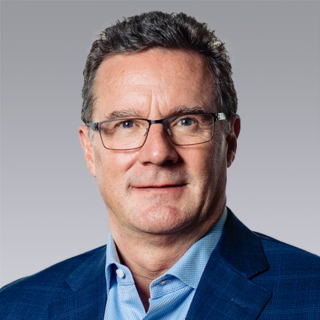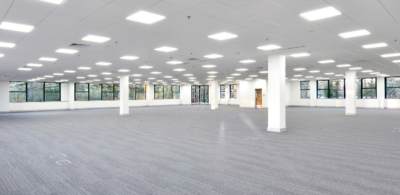In 2020, the people of Colliers challenged themselves to turn up the volume on their Diversity and Inclusion (D&I) efforts.
We recently brought together five Colliers experts who actively advocate diversity and inclusion inside and outside Colliers to discuss their experience with the company’s efforts on this front. In the first of a two-part online conversation, we’ll hear about the successes for the company and the broader commercial real estate (CRE) industry, and the future opportunities for both to do more to understand, nurture and celebrate diversity and social justice.
On why we should be having these conversations
Colin Worrell, Managing Director of Brokerage Group, Montreal: I am concerned with the CRE industry in general. I am interested in making sure that more industry meeting rooms have diverse representation, before I arrive and after I leave. We need to bridge the gap between corporations looking to be diverse, and promising, diverse professionals, by understanding what has kept them separated over time.
Arlene Dedier, Director of Private Sector for Project Leaders: There’s an opportunity to embrace the shift that’s happening right now, and really change. There are learnings and un-learnings to be done, and we need to be really intentional about that.
Kerris Hougardy, Vice President of People Services, North America: Colliers has made some real progress this year, within our industry and across Canada. We’re still very much on a journey, but there has been a lot of positive progress. Over the last twelve months, we’ve seen increased engagement across all levels of our professionals.
Amy Vuong, Vice President of Strategy for Real Estate Management Services Group: I want to ensure that everyone feels they have equal opportunity and access within Colliers to our D&I programs so that we can set the tone for the industry.
Synthia Kloot, Senior Vice President, Strategy, Finance & Operations |Brokerage Services Canada: We are gaining momentum and seeing a huge shift. We are very action-oriented at Colliers, so rather than saying we are doing something, we act and have tangible proof points that are evidence of the work done and the level of change.
On the evolution of Colliers D&I efforts in 2020
AD: In the last months of 2019, the program evolved into a more professionalized structure. We wanted to make change in real, identifiable ways and establish pillar content and strategies to create actions.
SK: We had the opportunity near the end of last year to bring everyone involved in leading the initiative together. It really crystallized, with robust discussion, what 2020 would look like and achieve. Throughout the year, we remained accountable to specific goals and so were also able to recognize the successes.
KH: There was a refocus on how we structured the program, in order for us to narrow in on the key priorities that were going to drive the greatest return. That helped all of us to zero in. The focuses were defined by pillars. Our five pillars are: Internal Programs, which focuses on inclusive benefits offerings and the employment value proposition; Leadership, giving education and awareness to our leaders to support them in creating more inclusive workplaces; Champions Network, using market level networks to represent the overarching D&I program; Communications, which shares our journey internally and externally; and Employee Resource Groups, which provides tools, resources and a framework for anyone who wants to build an internal group with a specific diversity structure.
AD: This year we really held a mirror up to ourselves and the reflection wasn’t always pretty, but it was honest. We have to embrace where we are with ambitions to improve. It’s a methodical move forward, and even if we don’t stay right on target, our pillars keep us focused and aligned. I find myself having uncomfortable conversations with colleagues more often. The great news is that even if we stumble through the conversation, we are making the effort to have it and to ask for ways to improve. I don’t think that we would have had those conversations five years ago. It’s definitely a different environment.
On the particular challenges within the commercial real estate industry when it comes to embracing, supporting and improving diversity and inclusion
CW: It is a tale of two tiers: management and sales in one, support staff in the other. There’s a lot of diversity at the support staff level; there’s not a lot at the sales and advisory level, where revenue is created, or on the management level. That’s the challenge. This was true 20 years ago when I entered the industry, and it’s true today. I’ve left organizations in the past because I didn’t see others like me in executive positions. I didn’t feel I fit the profile they saw for leadership.
Organizations need to not only be intentional about finding diverse employees, but also in letting applicants know that they are doing it intentionally. I can happily say that when I was looking to join Colliers, it was clear from Scott [Addison, President of Canada Brokerage] that this was the case.
AD: It’s hard to change something when you don’t realize there’s a problem. I think what we are seeing now is a greater level of empathy. People need to acknowledge the problem and privilege in order to unlearn the thinking that allowed them to overlook it in the first place.
CW: The clear indication that there is something wrong with the system is its end result; that there’s just not enough diversity. The reality is that we are not picking equally from the palette of people out there. So, the next question is, why? Are we hiring from our own universities? Our membership clubs? Our friends and family members? We need to go past that, outside of that.
AV: This extends beyond how people look, too. I’ve seen so many examples where people look for someone who possesses the same qualities that they do – of being assertive and confident, presenting themselves in the same ways. This results in a lot of people being overlooked who could really have succeeded in that role.
CW: There’s unconscious bias, and there’s affinity bias. People are drawn to people who are like themselves. That is an unconscious selection we often make in the real estate industry when determining which salesperson will be best matched with a client.
AV: There are people looking to join the industry who don’t have those professional career networks inherently. Perhaps they didn’t grow up in that sort of community, perhaps they are new to the country. Mentorship is so important to bridge that gap.
CW: To take it one step further, mentorship must be paired with sponsorship. Sponsorship is not talking to the mentee, it’s talking about the mentee. It’s going out and fighting for that mentee, actively advocating for their advancement. It’s key to changing any industry in this respect.

 Colliers Insights Team
Colliers Insights Team

 Martin Woodrow
Martin Woodrow Chris Zlocki
Chris Zlocki
 Aaron Jodka
Aaron Jodka
 Andrew Steele
Andrew Steele